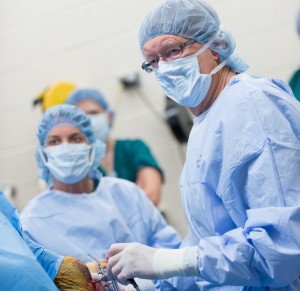
Philanthropists John and Leslie Malone, fascinated by the healing power of stem cells, have committed a record $42.5 million to Colorado State University to develop regenerative medical therapies for animals and people.
It is the largest cash gift in university history, a remarkable commitment to improved human and animal health and well-being.
The donation will launch the CSU Institute for Biologic Translational Therapies to investigate next-generation remedies based on living cells and their products, including patient-derived stem cells, to treat musculoskeletal disease and other ailments. Colorado State veterinarians are expert at analyzing medical treatments for animal patients, then providing knowledge gained to boost human medical advancements; the progression is known as translational medicine and is successful because of similarities in animal and human physiology and disease.
“We are tremendously grateful to John and Leslie Malone for their generous philanthropy, foresight and dedication to scientific discovery,” Colorado State President Tony Frank said. “In addition to being the largest cash gift in the university’s history, their commitment positions us to build on our foundation as a leader in translational medicine, where advances in veterinary medicine very rapidly move into the sphere of benefitting human health.”
The new institute will be unique in its focus on developing regenerative treatments from inception in the laboratory setting, through clinical trials, to commercialization of new technologies.
Malones’ horses help inspire gift
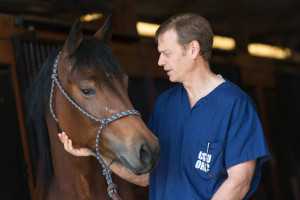
The largesse was inspired in part by stem-cell treatments the Malones’ world-class dressage horses have received to help repair stressed and injured joints, the couple said. They discussed the gift at their sweeping horse farm near Denver.
“You put so much training into them, it would be wonderful to have them enjoy their health for a longer period,” Leslie Malone said. She led through her immaculate barn a promising dressage competitor named Blixt, a gelding that suffered lameness, underwent successful arthroscopic surgery at the Colorado State Orthopaedic Research Center, received stem-cell injections, and now is back to training.
“We think this whole area of research is very exciting in what it portends for humans and animals,” John Malone said. “When you say, ‘Who’s in the best position to do something about this?’ – to take cutting-edge research and apply it pragmatically to the problems we see that people and horses are encountering on a day-to-day basis – it became pretty logical. CSU was the right place to go.”
The Malones’ gift will provide $10 million for operations and $32.5 million for construction of an institute building, to feature laboratories, specialized surgical suites, and conference space for veterinarians and physicians. The lead gift requires $32.5 million in matching donations for building construction.
Gift will shape future therapeutics
“We are truly appreciative and humbled by John and Leslie Malone’s contribution to Colorado State University. This is a transformational gift that will make a difference in our society today and in the future,” Brett Anderson, vice president for advancement, said.
The Malones, dedicated to dressage and racehorses, first encountered Colorado State through its Orthopaedic Research Center, led by Dr. Wayne McIlwraith, University Distinguished Professor and renowned equine arthroscopic surgeon.
In 2013, the philanthropic couple donated $6 million to endow the Leslie A. Malone Presidential Chair in Equine Sports Medicine, a way to foster prevention, diagnosis and treatment of injuries in performance horses.
They soon focused on the Orthopaedic Research Center’s work in biological therapies – with gene therapy, stem cells, specialized tissue replacement and novel proteins. These therapies, used alone and in combination with minimally invasive surgery, could provide more effective and longer-lasting treatment for equine athletes and people with osteoarthritis and orthopaedic injuries.
“We are so thankful for John and Leslie’s support and consider them real partners,” McIlwraith said.
Veterinary medicine has a unique role
Colorado State has demonstrated the value of treating animal patients with naturally occurring disease as a vital step in developing new treatments for human patients, noted Dr. Mark Stetter, dean of the CSU College of Veterinary Medicine and Biomedical Sciences.
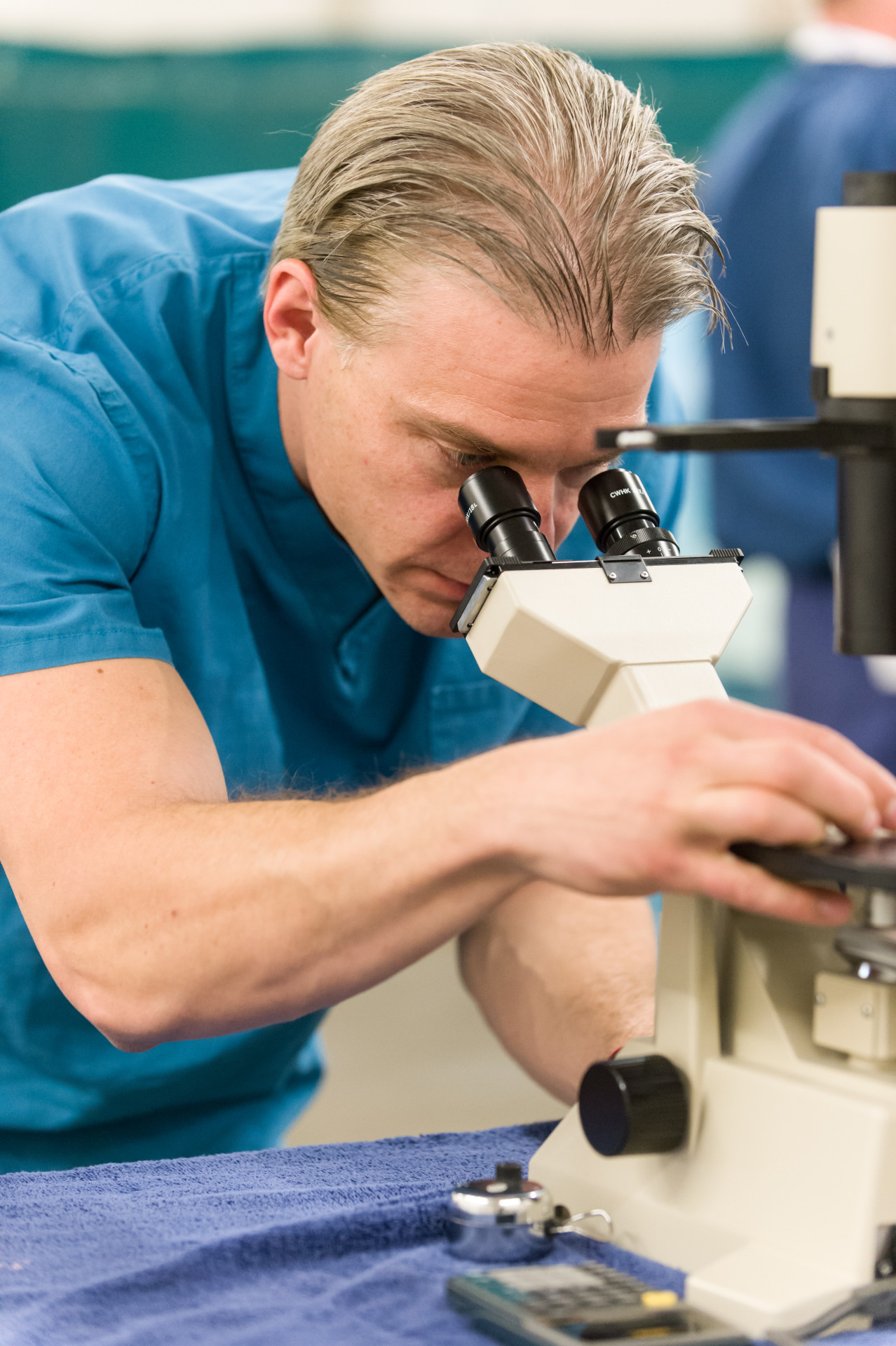
Dr. John Kisiday is a bioengineer and Orthopaedic Research Center faculty member working on regenerative therapies.
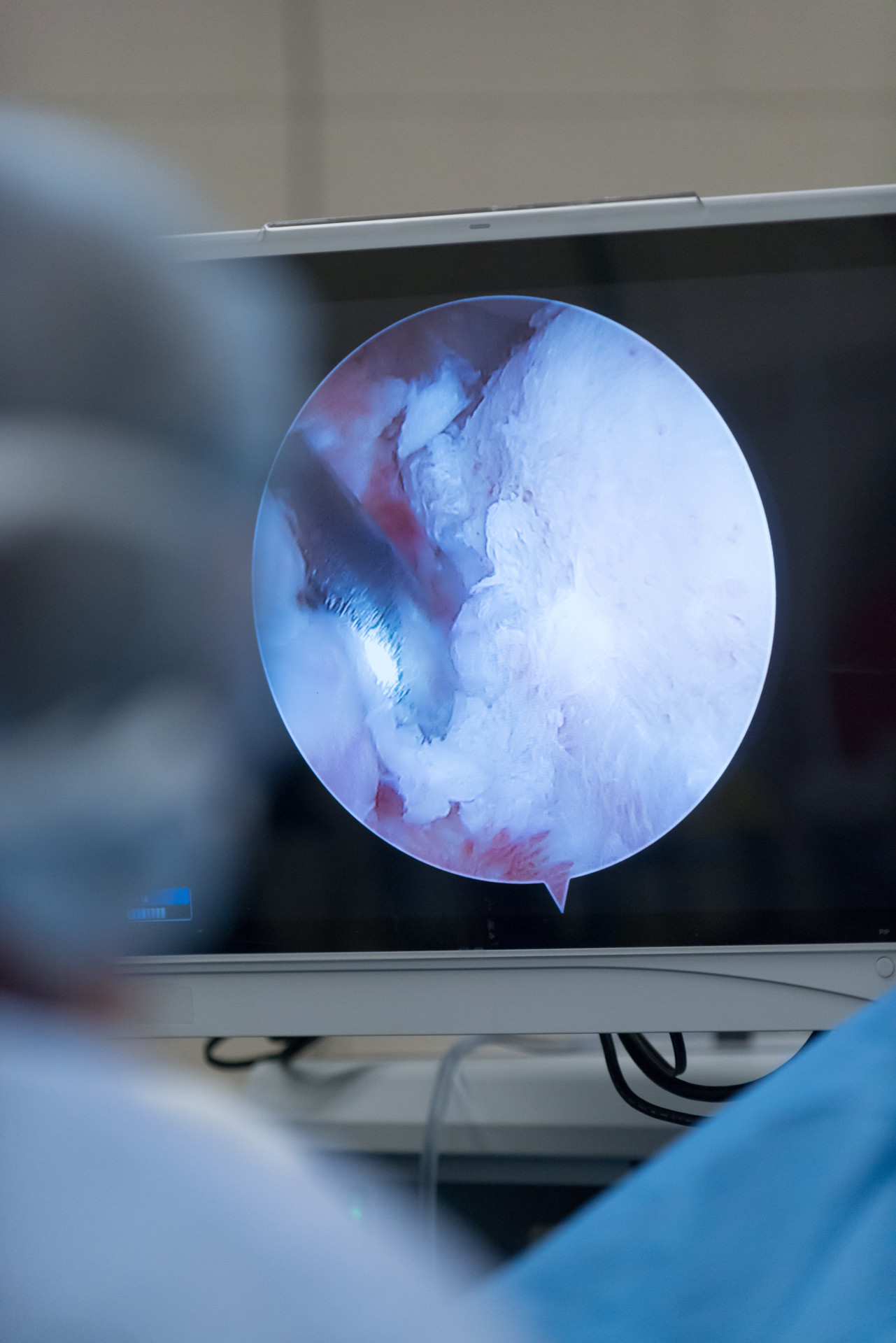
A monitor displays McIlwraith’s arthoscopic surgical techniques as he operates on a horse.
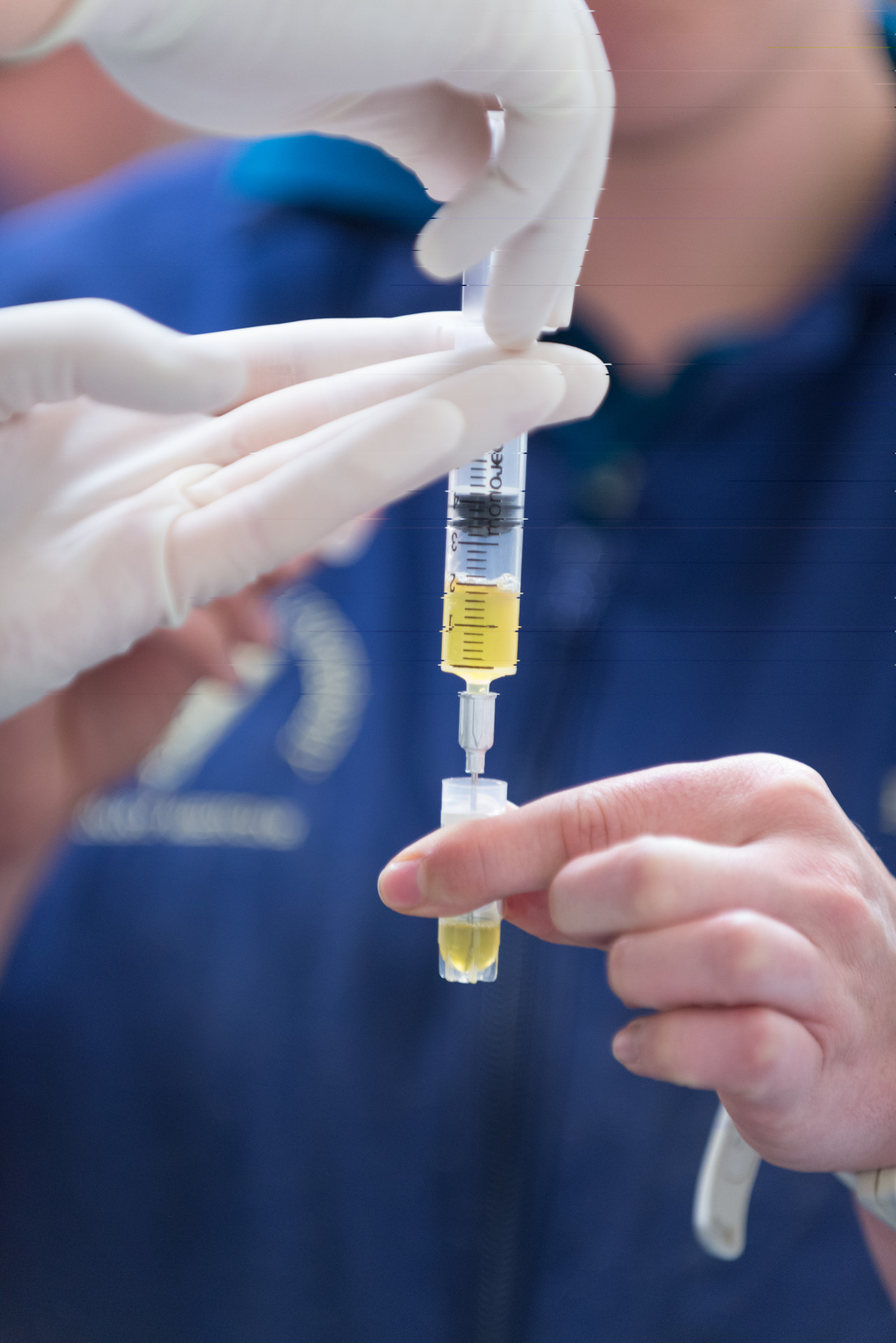
A syringe of cultured, patient-derived stem cells is ready for injection into a horse’s injured joint to promote healing.
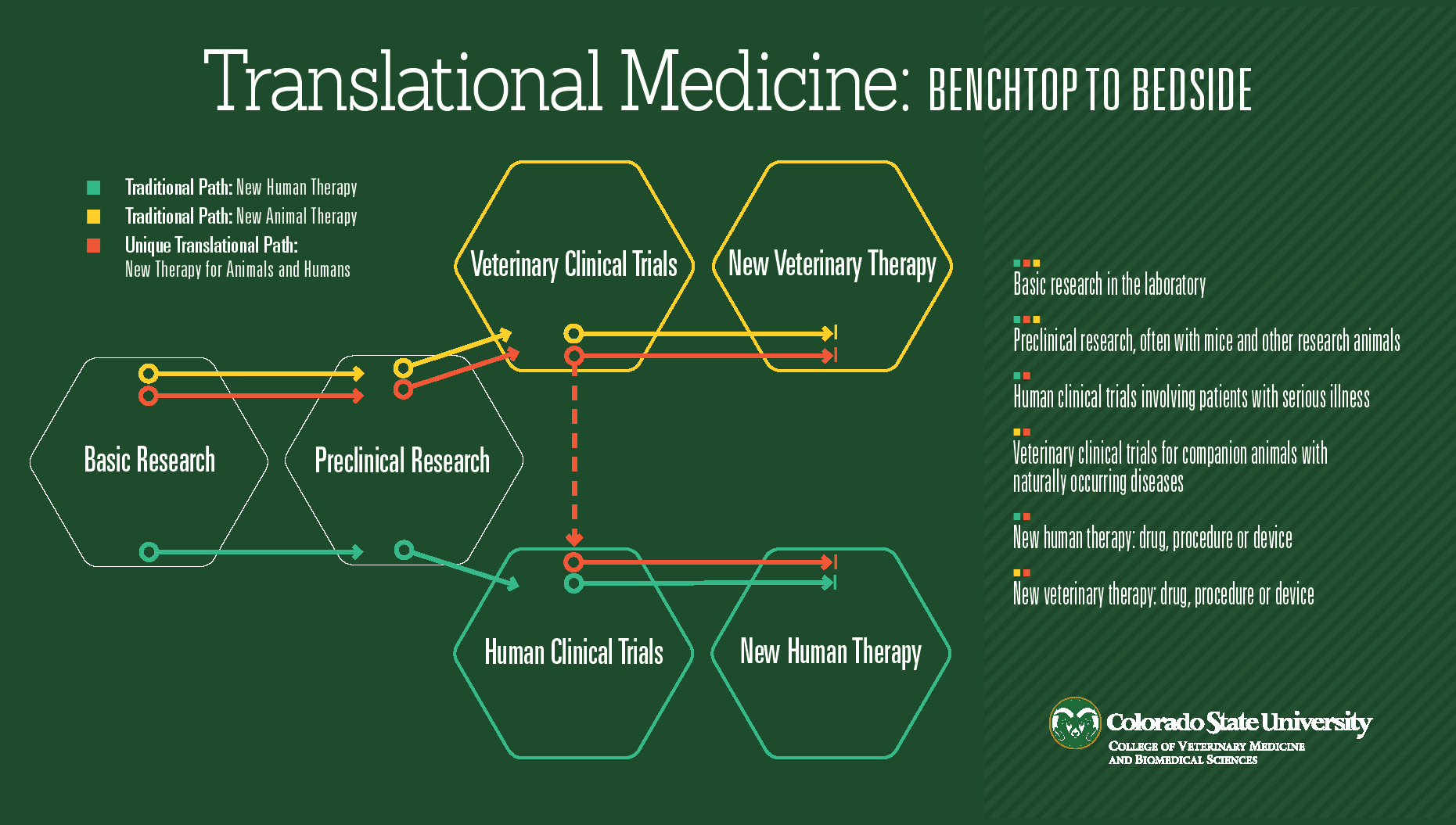
The approach provides a logical and clinically relevant step in the benchtop-to-bedside research path for new therapeutics: Veterinarians design clinical trials to treat animals with chronic or acute illness; knowledge gained in the course of this treatment helps spark new therapies for pets and people.
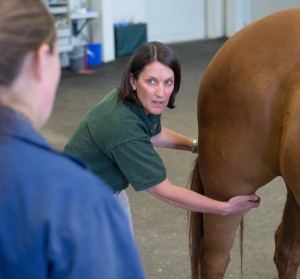
“We are extremely grateful to Dr. and Mrs. Malone for supporting the unique role of veterinary medicine by so significantly supporting strides in animal medicine that may be translated into new options in human healthcare,” Stetter said.
Biological therapies are the next horizon
John Malone, a dedicated athlete in his school days, described his own orthopaedic aches and pains while explaining the vision he and his wife have for advancing regenerative treatments.
“This is a very exciting and very broad area of research, and it’s going to pay big dividends in both human and animal medicine,” Malone said. “It seems entirely appropriate to assist in the development of this research at one of the top vet schools in the country.”
The institute established with the Malones’ lead gift will allow Colorado State to vault ahead in its work.
“We’ve really gone through a transformation in recent years, with more participation in human medicine,” said McIlwraith, leader of the Orthopaedic Research Center. “This has occurred because of the comparability of equine joints and equine joint problems with human joint problems, extending into tendon and ligament injuries, which are big concerns in both humans and horses. This new institute takes us to another level with all of this work.”
Philanthropy is essential and is breaking records at Colorado State
By Maggie Walsh
Private giving to Colorado State University is more important than ever to support student scholarships, faculty, facilities, research – and to create new programs and initiatives.
Donors continue to demonstrate their confidence in Colorado State, smashing the university’s fundraising record for the last three consecutive years. Here are some facts and figures to illustrate the trend:
- Alumni and friends donated $143.3 million during the 2013-14 fiscal year.
- That was nearly 30 percent more private giving than was received in 2012-13.
- By comparison, CSU received $97.1 million in public funding from the state of Colorado in 2013-14.
- That means philanthropy contributed nearly 50 percent more to the university than did the state of Colorado in 2013-14.
- Private giving already has eclipsed $100 million in 2014-15.
Passion and commitment to the university’s mission underscore contributions from alumni and friends, President Tony Frank said. This commitment is humbling, and inspires enthusiasm and determination among students, faculty and staff at one of the nation’s best public research institutions.
“CSU is committed to excellence in all we do,” Frank said. “The confidence our donors place in our outstanding teaching, research and service raises our standards, and we are eager to show our supporters, and the world, that Colorado State University is working to solve our globe’s greatest challenges while educating the next generation of world leaders and problem-solvers.”
Brett Anderson, vice president for University Advancement, said all gifts to CSU, whether large or small, make a profound difference.
“Gifts from generous donors create scholarships, allow us to retain and support some of the world’s best researchers and professors, bolster life-changing programs, and help us renovate and build state-of-the-art research and teaching spaces,” Anderson said. “We are grateful for the tremendous partnerships we enjoy with donors from right here in Colorado, across the nation, and around the world, who feel strongly about our mission and understand that together, we are all stronger.”
Media Assets
Video
- Reporter pkg with track
- Reporter pkg with track, no graphics
- Pkg script and graphic info
- Nat sound pkg, no reporter track
- SOT with John Malone, Tony Frank and Wayne McIlwraith
- b-roll, nat sound only
Photo
 John and Leslie Malone walking, outside
John and Leslie Malone walking, outside
 Malones with horses and riders, indoors
Malones with horses and riders, indoors
Other


